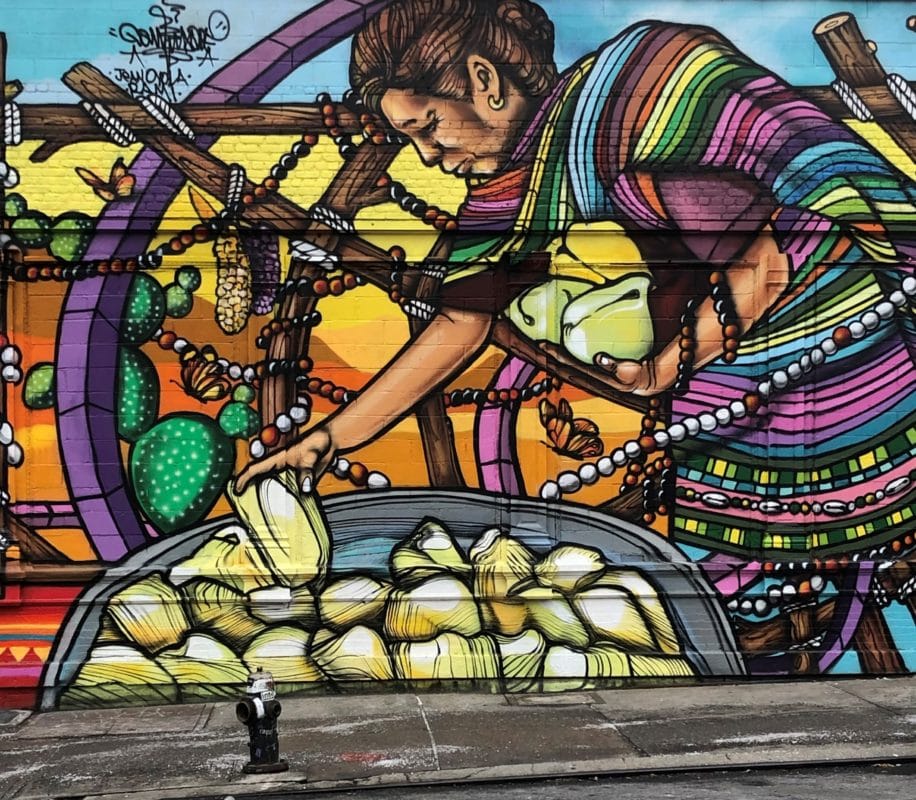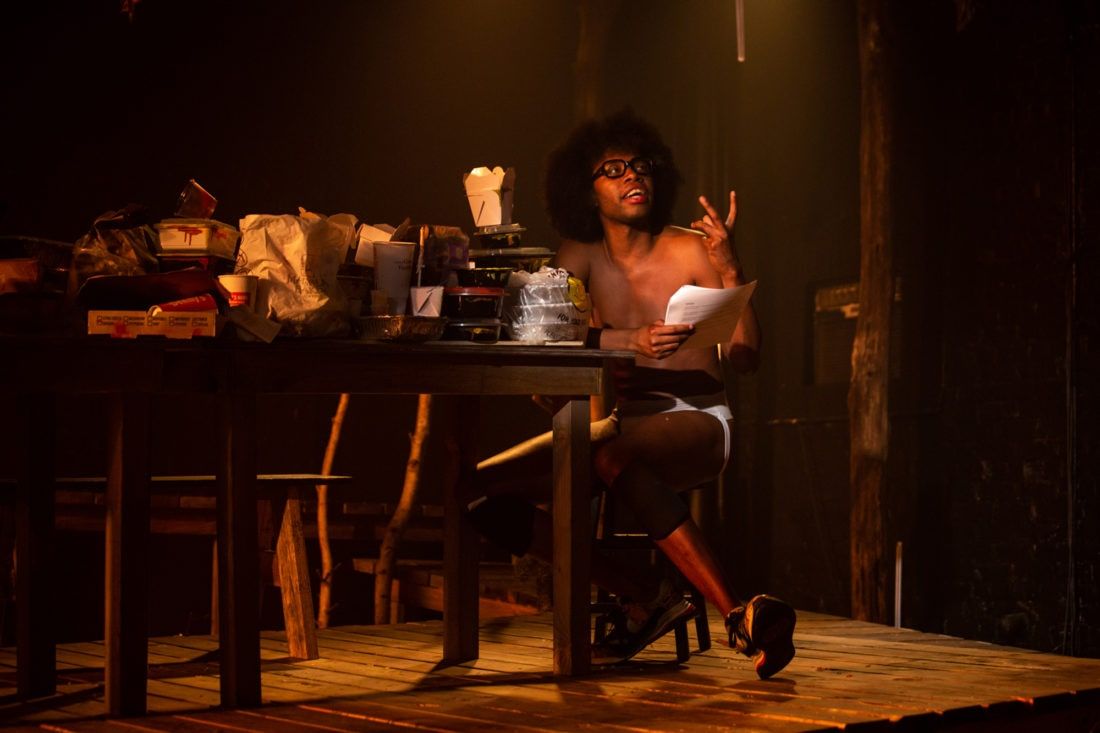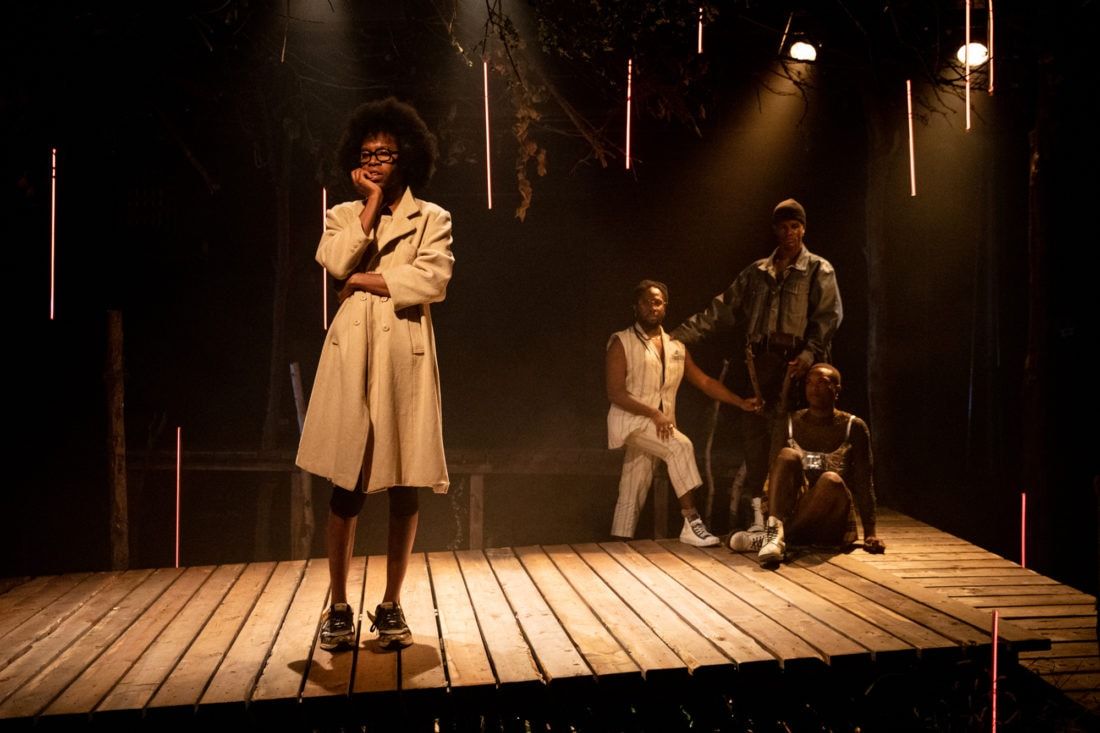Role of Art in Navigating Bushwick’s Gentrification Minefield


BUSHWICK — It was in the summer of 2017 at the New Ohio Theatre when Noel Allain, The Bushwick Starr’s theater co-founder and artistic director, first encountered the African American playwright and actor Jeremy O. Harris. At that time, Harris was an emerging artist and Yale University drama student—a couple of years before skyrocketing to fame after his Slave Play debut, Allain recalled to Bklyner.
Harris made a promise two years ago, which he kept, to perform at the Starr theater. “Black Exhibition,” Harris’ sold-out performance, opened at the Starr in November and was extended to December 15.
Allain and co-founder Sue Kessler, who are white, are navigating Bushwick’s gentrification minefield. The fierce debate about how newcomers impact the neighborhood involves not just the displacement of longtime residents but also the art venues and culture those residents established.
“It’s part of our mission to make sure the work we’re presenting represents a lot of different people,” Allain said about the Starr, which started in 2001 and opened its first full season in 2009. “We don’t want to present work that is predominantly about white people or men, those are groups that have been traditionally, overwhelmingly represented.”
The Starr plans its shows about two years in advance, Allain explained. When it comes to ensuring inclusivity, he said the theater’s process “isn’t an exact science.” In scouting for variety, Allain ventures out to see lots of different performances and meet a variety of people.
That process led to a close association with Dominican-born, Bushwick-raised actor and poet Modesto Flako Jimenez. Flako, who is now a staff member, performed the Starr’s first Spanish language show in 2015. He underscores to the team that it’s not enough to open the theater’s doors and say everyone is welcome, Allain said. It’s important to serve the community in a meaningful way, Flako also emphasizes.

There are consequences when new arts venues neglect to integrate and become a part of the community. A report released in July by the New York City Department of Cultural Affairs points out what has happened in Bushwick.
“The community surveys conducted for this report showed that cultural erasure, loss of self-determination, and a sense of belonging are key issues that the neighborhood is grappling with,” said the study, which the Starr and social justice non-profit El Puente conducted together.
The report continued: “…Many longtime residents report that they are at risk of or already experiencing a severe loss and appropriation of existing cultural and artistic practices, spaces, and traditions as communities watch their family members and neighbors being priced out.”
Indeed, Bushwick has been a hotbed of anti-gentrification protest over rezoning in the neighborhood. In July, for example, the group Mi Casa No Es Su Casa, working with the art-activist collective The Illuminator, displayed messages, such as “Rezonings are Racist,” on brick walls in the community.
“Gentrification has displaced many Black and brown folks,” Mi Casa No Es Su Casa member Mariluz Luna, who was born and raised in Bushwick, told Bklyner. “Friends and community members, who were longtime residents had to move out of Bushwick due to the landlord selling out the building, but actually fixed the building and then raised the rent.”
Luna laments that her neighborhood “is becoming the new Williamsburg.” She has observed white people on art tours in Bushwick taking photographs of the neighborhood’s murals.
“Artists who are not from the community should be mindful when they are putting their work out and understand how their work is branding and impacting the community,” she said.

Art can be used as a tool to preserve Bushwick’s culture in the face of gentrification, Luna said, adding that she was inspired to join Mi Casa No Es Su Casa after seeing The Illuminator’s artwork.
“To me, I saw it as dope work they were doing. Their artwork connects issues such as harassment from the landlord, being displaced, and rezonings as being racist,” she stated.
The Starr opened its doors before the rapid changes started. Ten years ago, longtime residents welcomed new arts venues to the community and viewed them as bringing much-needed resources, Allain recalled.
“Now, there’s a lot of anger—and there should be,” he said, acknowledging that the Starr is a gentrifier. “There’s no way around that. We came in during that period. We started an arts organization. That’s the oldest story in the book.”
To better serve the community, the Starr surveyed longtime residents.
“Overwhelmingly, people said after-school programs and arts in the school are needed.” So, 10 years ago, the Starr launched the Big Green Theater, an eco-playwriting program at elementary schools in the neighborhood. Under the program, students write plays based on environmental justice guest speakers. The theater then produces the plays using professional actors.
“Moving forward, it is of critical importance to residents and stakeholders, both new and old, that this community can both preserve its cultural history and protect the people contributing to it,” the Cultural Affairs report recommended.



